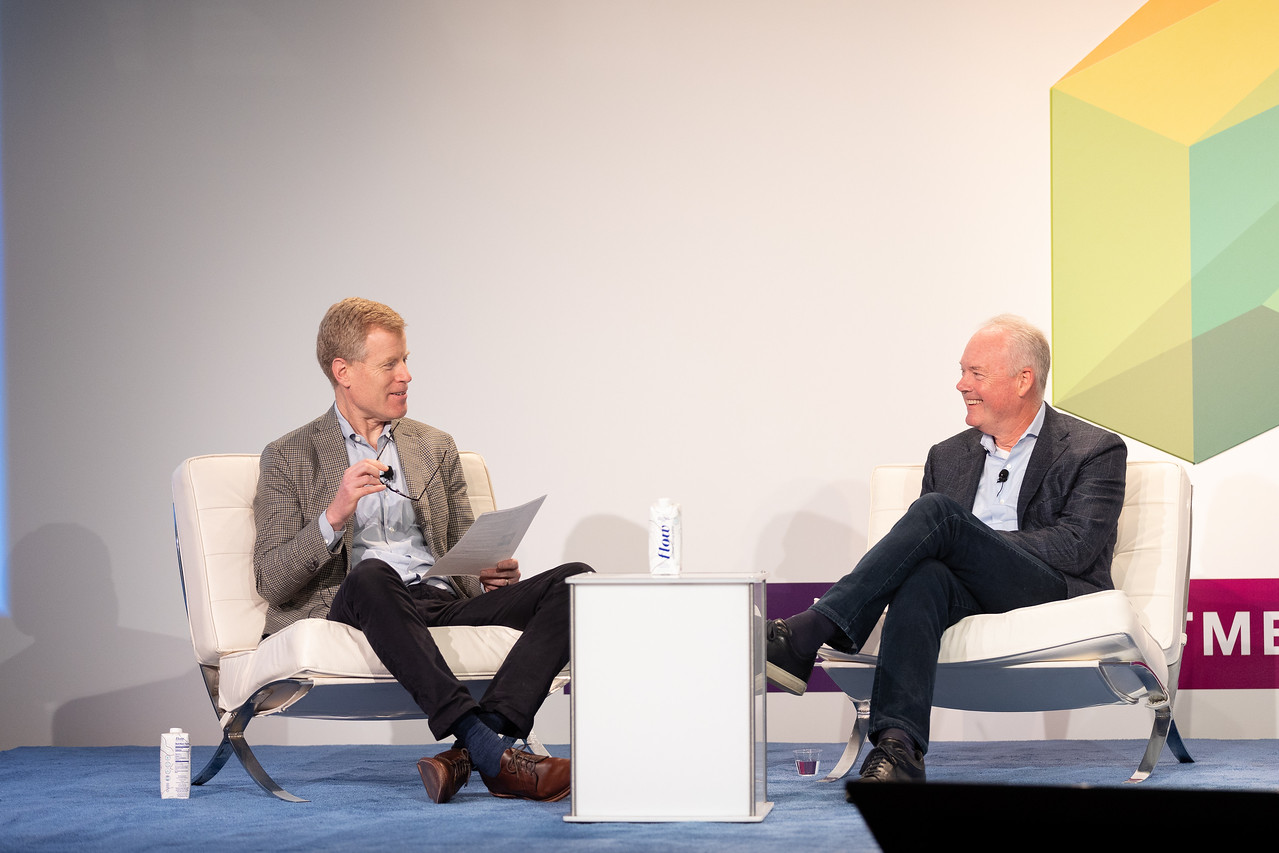Retail Reimagined: Key Insights from the Global Department Store Summit
Earlier this month along with the Intercontinental Group of Department Stores, Nordstrom co-hosted the Global Department Store Summit. During the two-day summit, international leaders gathered in Seattle to discuss important transformations within the retail industry and shared new ideas as they collectively work to reimagine the customer experience.
1. Retailers Need to Leverage Data and AI to Create Personalized Customer Experiences

Nordstrom Chief Customer Officer, Ken Worzel outlined Nordstrom’s market strategy and how we use technology and data to get closer to our customers including data and AI to deliver personalization at scale and enhance digital discovery.
“Our heritage of customer service has never changed in our 120 years as a retailer, and we continue to be a company that is focused on serving customers on their terms,” shared Ken Worzel, chief customer officer at Nordstrom, Inc. “While we have stayed true to this mission, we also know the way we serve customers has evolved. We know that a customer’s shopping journey involves experiences across physical and digital touchpoints, which is why our market strategy is all about getting closer to our customers.”
Ken Worzel also spoke about how Nordstrom is supporting the evolution of the customer journey, “Our customers want to feel like we know them, and our Fashion Map plays an important role in bringing them product discovery. Fashion Map bridges keywords and fashion concepts to generate relevant and personalized product recommendations that are tailored to each customer.
2. Heritage Brands are Evolving to Meet the Needs of the Modern and Future Customer

Chief Brand Officer and President, Pete Nordstrom spoke to the CEO of Levi Strauss, Chip Bergh, to discuss the challenges he’s navigated in his tenure, including how to keep the brand relevant with customers across different age ranges, to how the company’s values drive their actions on social and environmental issues.
“Everybody has a Levi's story, whether you wore them for a first date, going into high school or any milestone. Our intent was to help make the brand relevant and cool again,” said Chip Bergh, CEO of Levi’s Strauss and Co. “To do this, we had to connect with a younger customer without losing our loyal ones that have worn the brand for years. It was all about putting the brand back at the center of culture, listening to what our customers wanted and being more innovative.”
Chip Bergh continued to speak to the brands heritage by highlighting their values, “The values of the company speak to the heritage of the brand, which goes back to the founder, Levi Strauss himself. The very first year he made a profit, he donated a percentage to a local charity. He believed that businesses exist to do more than to make money for the shareholder, but that they exist to make a difference in their communities and the world. Helping the communities we serve and doing the right thing is part of the DNA of this company.”
3. Retailers and Brands Have the Opportunity to Lead Through Change

There were a number of sessions that touched on the importance of leading through change.
CEO Erik Nordstrom sat down with Kevin Johnson, former CEO of Starbucks for a discussion on insightful topics such as how the company lead through adversity and maintaining human connection on the other side of the pandemic.
“At the height of the pandemic, we said we were going to lead with three fundamental principles to guide us through our decision-making,” said Johnson. “The first is prioritizing the health and wellbeing of our employees and partners. The second, partnering with local health officials to help mitigate the spread of the virus. And three, we wanted to show up in a positive way. We trusted Starbucks leaders around the world to make every decision based on those three principles.”
As Starbucks physical locations began to open back up, Johnson added, “We knew that people were craving those social experiences and human connections. Our stores had this pillar of being the Third Place—a place between work and home where customers can feel connection and belonging.”
Former Chairman and CEO of Alaska Air Group, Brad Tilden, spoke about the importance of creating a strong culture.
“Airlines typically have big crisis that we have to lead through—they shape the business to the core and provide opportunities for leaders. We created Alaska leadership principles to guide our leaders. Key principles include creating a high-performance culture, accountability, commitment to our people and challenge our people to be the best.”
4. Building Connection that Enhances the Customer Experience
As retailers look to the future, it was clear that service plays a key role.
Nordstrom Chief Stores Officer, Jamie Nordstrom, spoke about our commitment to serving the customers rooted in our legacy and how interconnectivity between stores and digital is critical to delivering great service and continuing to improve that experience.
“Our commitment to serving the customer has never changed—what has changed is the interconnectivity between stores and digital that has become critical in how we can deliver great service and continue to improve that experience” said Nordstrom. “Our digital properties make our stores better by helping scale our reach and our stores make digital better by helping serve customers faster and provide one-on-one in-person service.”

Tory Burch CEO Pierre Y. Roussel also touched on the importance of the store and how it enhances the customer experience.
“At Tory Burch, we believe in the power of the one brand concept”, said Tory Burch CEO Pierre Y. Roussel. “Every product we create and experience we provide should co-exist within a singular brand story. This rule is true across our multi distribution channels, but especially physical locations. The beauty of the department store is that it offers a multi-brand experience while telling a consistent story for customers to connect with and shop.”
5. Integrating Responsible Business Practices
While driving business results and creating differentiated customers remains a key focus, we also heard from several leaders about the role businesses play in driving positive impact on our planet.
CEO of Fordham University’s Future Business Coalition, Cara Smyth, shared how companies can influence positive change within responsible business practices, saying, “The power that companies have is immense. If you turn back to your supply chain partners and outline exactly how you want products delivered, labeled and information around transparency you can force change. If you turn in the other direction and provide customers transparency to help them shop their values, you unleash another opportunity for change.”
Cara continued, “An integrated communication strategy is key as companies drive environmental and sustainable change. We know this is important to customers, in fact, we’ve seen a 71% increase over the last 5 years in searches for sustainable products.”
Nike’s Chief Sustainability Officer, Noel Kinder, touched on how customers shop their values with brands like Nike saying, “You have to earn your way into communicating with the customer, and that also means listening to what matters most to them. We know customers are willing to wait for their orders (eliminating rush shipping) if that means it’s better for the planet.”
Throughout the two-day summit, we had a unique opportunity to connect as a retail community, learn from one another and chart a path forward for the retail industry. While leaders addressed topics around technology, sustainability and leading through change, what tied the summit together was the shared sentiment that delivering innovation on behalf of customers is the key to reimagining the retail industry.
